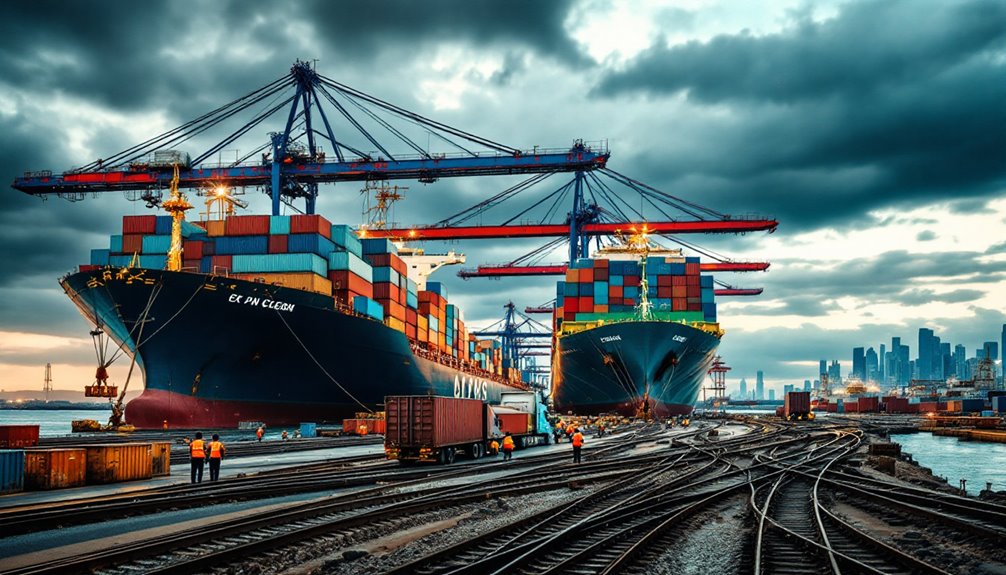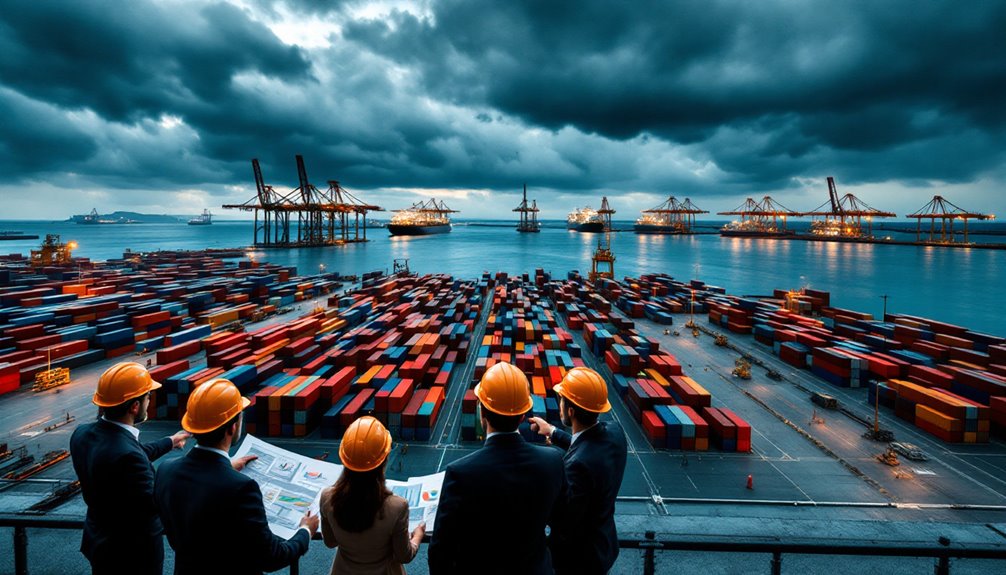
Supply Chain Disruptions Reshape Global Trade Policies
Recent global supply chain disruptions have transformed how you'll approach international trade, with geopolitical tensions and the pandemic forcing significant policy shifts. You're seeing organizations implement robust resilience strategies, including supplier diversification and enhanced technology adoption, while maneuvering through complex tariff structures and regulatory changes. To maintain competitive advantage, you'll need to leverage data-driven insights and strengthen supplier relationships across multiple regions. These strategic adaptations signal profound changes ahead in global commerce.
Key Takeaways
- Recent supply chain disruptions have prompted nations to reevaluate trade dependencies and establish more resilient domestic production capabilities.
- Tariffs and trade barriers have forced companies to diversify supplier networks across multiple regions, reshaping traditional trade patterns.
- Geopolitical tensions have accelerated the shift toward regionalization of supply chains and establishment of new trade partnerships.
- Countries are implementing policies to strengthen domestic manufacturing and reduce reliance on single-source international suppliers.
- Technology adoption in supply chain management has influenced trade policies focused on digital commerce and data-driven decision making.

While global supply chains have historically demonstrated remarkable resilience, recent years have witnessed unprecedented disruptions stemming from geopolitical tensions, trade policy shifts, and external shocks that have fundamentally altered the international trade landscape.
You'll find that tariffs have emerged as a significant force reshaping supply chains, compelling organizations to reassess their procurement strategies and supplier relationships. These trade barriers have increased costs across multiple industries, from automotive to technology sectors, forcing companies to absorb higher expenses or pass them on to consumers. The 25% tariffs on China-made goods have particularly impacted U.S. medical device manufacturers, highlighting the need for strategic supply chain redesign.
You'll need to understand that the impact extends beyond mere cost implications. Supply chain disruptions have created substantial demand-supply imbalances, contributing to inflationary pressures and hampering global industrial production.
The confluence of pandemic-related restrictions and adverse weather events has exacerbated these challenges, creating bottlenecks that continue to affect trade flows and economic recovery.
To maintain control over your supply chain operations, you must implement robust resilience strategies. You'll achieve better outcomes by diversifying your supplier base across multiple regions, reducing dependency on single markets that might be vulnerable to trade policy changes or disruptions.
Your organization should conduct regular scenario planning and stress testing to identify potential vulnerabilities before they materialize into actual problems.
You'll find that leveraging technology and analytics has become essential in managing modern supply chains. By implementing Supplier Information Management systems and AI-powered analytics, you can make data-driven decisions and respond more effectively to disruptions.
These tools will provide you with real-time visibility into your supply chain operations and enable faster decision-making when challenges arise.
The role of trade policies in shaping supply chain resilience can't be understated. You'll need to advocate for and adapt to a multilateral trading system that maintains low barriers and predictable regulations.
Your organization must stay informed about regulatory changes and be prepared to adjust operations accordingly. By strengthening relationships with suppliers and maintaining flexibility in your sourcing strategies, you'll be better positioned to navigate the evolving trade landscape and maintain operational continuity despite ongoing disruptions.
Final thoughts
You've witnessed how supply chain disruptions have fundamentally altered the global trade landscape, forcing nations to prioritize resilience over efficiency. As you adapt to this new reality, you'll need to contemplate how reshoring, nearshoring, and diversification strategies will impact your business operations. The future of international commerce demands your attention to risk management, technological integration, and strategic partnerships that can withstand future disruptions in an increasingly complex trade environment.

Leave a Reply